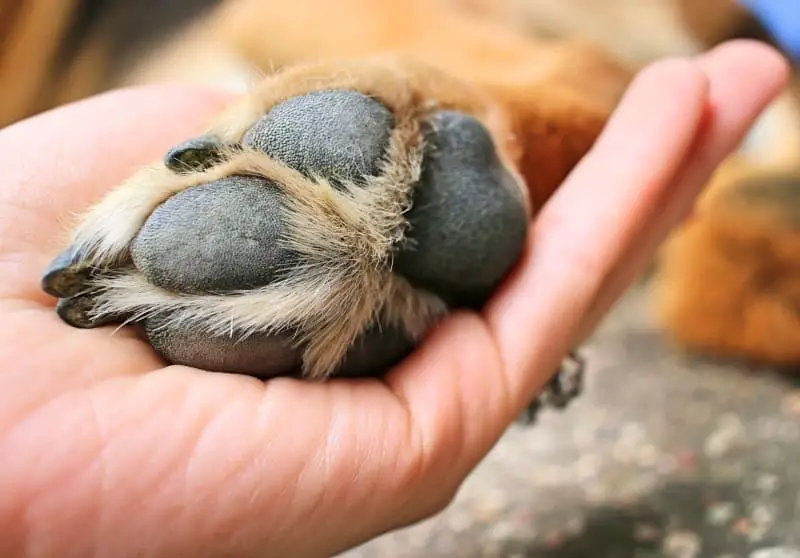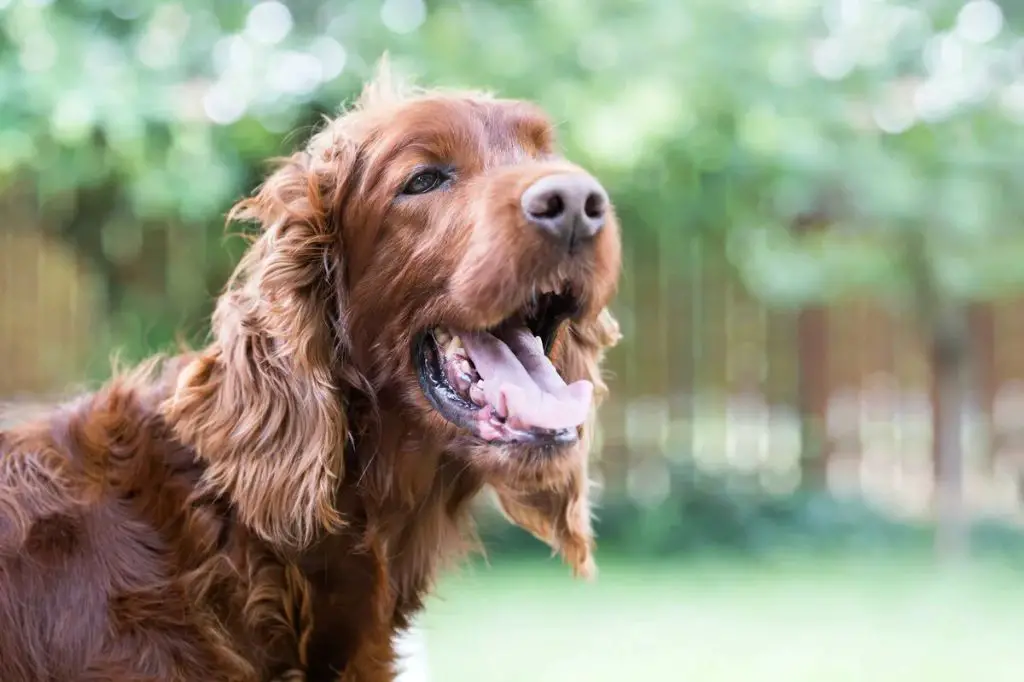Do Dogs Sweat Like Humans?
If you have a dog that frequently gets hot and flustered, you may have wondered if your furry friend actually sweats. We often anthropomorphize our pets and assume they function similarly to humans. However, dogs and humans have major differences in anatomy and physiology when it comes to temperature regulation.
Sweating serves the critical function of cooling down the body and preventing overheating. For humans, sweating through pores in our skin is our primary cooling mechanism. But dogs don’t have the same type of sweat glands spread across their body. So how exactly do dogs stay cool? Do they sweat at all? Read on to learn the facts about canine temperature regulation and signs of excessive dog sweating.
In this article, we’ll cover:
- How dogs stay cool compared to humans
- Where dogs actually do sweat
- Signs your dog may be sweating excessively
- Tips for managing overheating and excessive sweating
- Breed differences in temperature regulation
- When you should see a veterinarian
Do Dogs Have Sweat Glands?

Yes, dogs do have sweat glands, however they function differently than human sweat glands. Dogs have two types of sweat glands – merocrine sweat glands and apocrine sweat glands (American Kennel Club). Merocrine sweat glands secrete sweat directly onto the surface of the skin, similarly to human sweat glands. These are located on dog’s paw pads to help provide traction. Apocrine sweat glands are found throughout a dog’s body and secrete sweat into hair follicles rather than directly onto the skin’s surface. This means dogs do not sweat profusely over their bodies like humans do (West Texas A&M University).
While dogs do have sweat glands, they do not play a primary role in cooling off dogs. Dogs instead rely on panting and releasing heat through their paws and ears to regulate their body temperature.
How Dogs Stay Cool
Dogs have limited ability to sweat and rely on other means to regulate their body temperature. There are a few key ways dogs stay cool without sweating like humans do:
Panting: When a dog pants, evaporation of moisture from the tongue, mouth, and upper respiratory tract helps lower the body temperature. Panting is an important way dogs regulate heat without sweating through their skin (1).
Paw Pads: Dogs do sweat a small amount through their paw pads, which provides cooling through evaporation. However, this accounts for only a tiny amount of evaporative heat loss (2).
Minimal Fur: Dogs with minimal fur over their bodies, like Greyhounds and Whippets, allow more heat dissipation from the surface of their skin. Their lack of insulating fur helps keep them cooler in warm conditions compared to heavily furred breeds.
In summary, panting provides the most significant cooling effect for dogs, with minimal sweating through paw pads and differences in fur density also playing smaller roles in how they regulate body temperature.
Dog Sweat Glands Location

Dogs have sweat glands located primarily in their paw pads. These glands, called merocrine sweat glands, release sweat through tiny openings in the pads to help cool a dog down when they get overheated just like humans sweat for thermoregulation. According to the AKC, these merocrine glands function similarly to human sweat glands.
Dogs also have some sweat glands located on their noses. The sweat released here helps provide moisture to enhance a dog’s sense of smell which is very important for canines.
Additionally, dogs have minor sweat glands in their mouths, lips, and tongue. These help lubricate a dog’s jowls and mouth when panting to aid evaporative cooling.
However, unlike humans, dogs do not have many sweat glands spread over their body. Most of a dog’s cooling comes from panting rather than sweating through their skin like people do.
When Dogs Sweat
Dogs primarily sweat through their paw pads as a way to cool down. However, dogs may also sweat for other reasons such as stress, heat, and exercise. When a dog is feeling anxious or stressed, they may begin to sweat excessively due to stimulation of their apocrine sweat glands (source). These sweat glands are located throughout a dog’s body, including their chest, paws, and groin.
Dogs also tend to sweat more when they get overheated. On hot days or during strenuous exercise, a dog’s body temperature rises, triggering their sweat glands to release moisture. The evaporation of this sweat from the paw pads and other hairless areas helps regulate their temperature and prevent overheating (source). More sweat is produced in hot conditions or during activities like running or playing fetch.
Lastly, as dogs exercise, their increased metabolic activity generates more internal heat. To maintain a normal body temperature and not overheat, dogs will sweat more during and after periods of physical exertion. How much a dog sweats while active varies based on breed, coat, and fitness level.
Signs of Excessive Dog Sweating
There are several signs that may indicate your dog is sweating excessively. Some of the most common signs include:

- Wet paws – One of the main ways dogs sweat is through their paw pads. If your dog’s paws frequently appear damp even when they haven’t been licking them, this could be a sign of excessive sweating.
- Drooling – While some drooling is normal, excessive drooling can be a sign your dog is sweating profusely, especially if there is no obvious source of the drool like food or chewing on a toy. The saliva helps spread the moisture from the sweat glands around their body.
According to Hill’s Pet Nutrition [1], other signs of excessive dog sweating can include:
- Panting heavily even when not hot or active
- Appearing restless or distressed
- Having skin that feels damp to the touch
- Salting on their fur or skin
If your dog is displaying any of these signs frequently or for a prolonged period of time, it could indicate a sweating problem. Getting them checked by a vet is recommended.
[1] https://www.hillspet.com/dog-care/behavior-appearance/do-dogs-sweat
Managing Excessive Sweating
If your dog seems to be sweating excessively, there are some steps you can take to help manage it:
First, make sure your dog has access to plenty of cool, fresh water. Dehydration can make dogs hotter and exacerbate sweating. Provide water bowls around the house and bring water with you on walks.
Keep your dog in a cool area out of direct sunlight. Use fans, air conditioning, or cooling mats to help lower their body temperature. You can also wet your dog down with cool (not cold) water.
Limit exercise on hot days. Take shorter, slower walks in the early morning or evening when temperatures are lower.
Brush your dog regularly to remove excess fur that can trap heat. Some owners find gently clipping the fur can help too.
Anxiety and stress can also cause sweating in dogs. If you can’t find any medical cause, try to identify and reduce possible sources of stress.
In some cases, prescribing anti-anxiety medication may help reduce excessive sweating related to stress. Discuss options with your veterinarian.
Make an appointment with your veterinarian if the sweating seems abnormal or excessive. They can check for underlying medical conditions like thyroid problems, infections, or pain that may be causing it.
With veterinary guidance, you can get to the bottom of the sweating and take steps to keep your dog comfortable.
Breed Differences
When it comes to sweating, there are some key differences between breeds that relate to their coat length and body type.

Long haired breeds like Golden Retrievers, Collies, and Old English Sheepdogs have a thick double coat that provides insulation from heat. However, this can prevent heat from escaping their body and cause them to overheat more quickly. These breeds rely on panting more than sweating to help regulate their temperature. Their long coats also trap moisture against the skin when they do sweat, so damp fur is a sign they are hot.
Short haired breeds like Chihuahuas, Boxers, and Labrador Retrievers have an easier time releasing heat through their skin since their coat doesn’t provide as much insulation. They tend to sweat more readily through their paw pads and noses. Short fur also allows any sweat to evaporate which helps cool them down.
In addition, brachycephalic breeds like Pugs and Bulldogs don’t pant as efficiently due to their short snouts. This means they rely more on sweating through their paws to cool down, and are at higher risk of overheating on hot days (Source).
When to See the Vet
Unusual or excessive sweating in dogs can be a sign of an underlying health issue and requires veterinary attention. Some signs to look out for include:
- Profuse sweating that lasts for more than a day or recurs frequently
- Sweating accompanied by lethargy, weakness, or collapse
- Sweaty paws that leave visible wet tracks
- A sudden onset of sweating with no obvious trigger
- Sweating in cool conditions when the dog is at rest
Excessive sweating can be an early indicator of diseases like hyperadrenocorticism (Cushing’s disease) or hypothyroidism. It can also signify pain, fever, infection, or other system dysfunctions. Prolonged or severe sweating can lead to dehydration, electrolyte imbalances, and shock.
If your dog displays unusual sweat patterns, take their temperature and monitor their condition closely. Contact your veterinarian promptly if the sweating persists or your dog seems ill. Timely treatment is key to managing any underlying condition causing the sweating.
According to the Animal Emergency Service, even suspected heat stroke requires urgent vet attention, as it can quickly lead to organ damage or death if left untreated.
Conclusion
In summary, dogs do have sweat glands located throughout their body, including their paws, armpits, and around their nose and mouth. While dogs don’t sweat as profusely as humans, sweating is an important part of how they regulate their body temperature.
Excessive dog sweating can be a sign of overheating or certain medical conditions. Key things to watch for are panting, lethargy, and damp fur. There are steps owners can take to help manage sweating in hot weather, such as ensuring access to shade and cool water.
If excessive sweating persists even in cool conditions, or is accompanied by other symptoms, it’s a good idea to consult a veterinarian. They can check for any underlying issues and provide guidance on keeping your dog comfortable.
With proper care and awareness of their cooling needs, dog owners can help regulate their pet’s temperature and keep them happy and healthy.